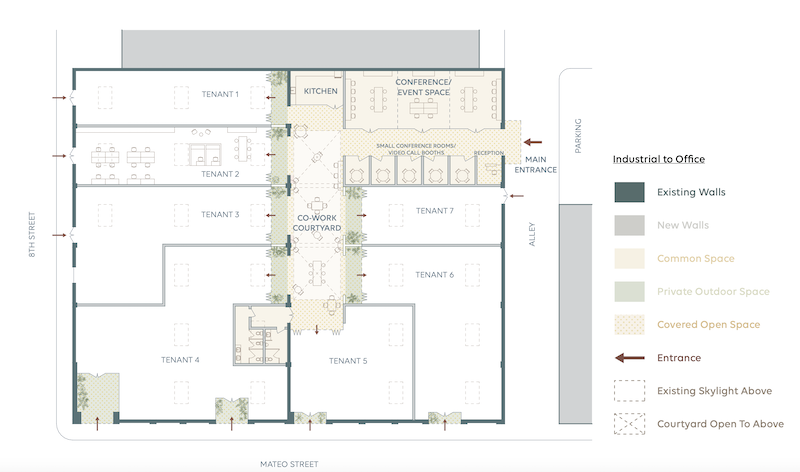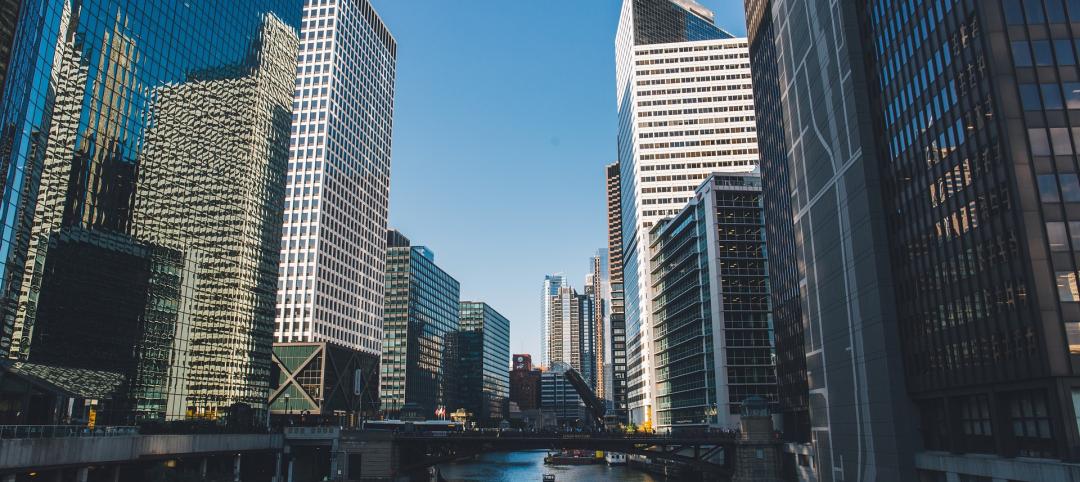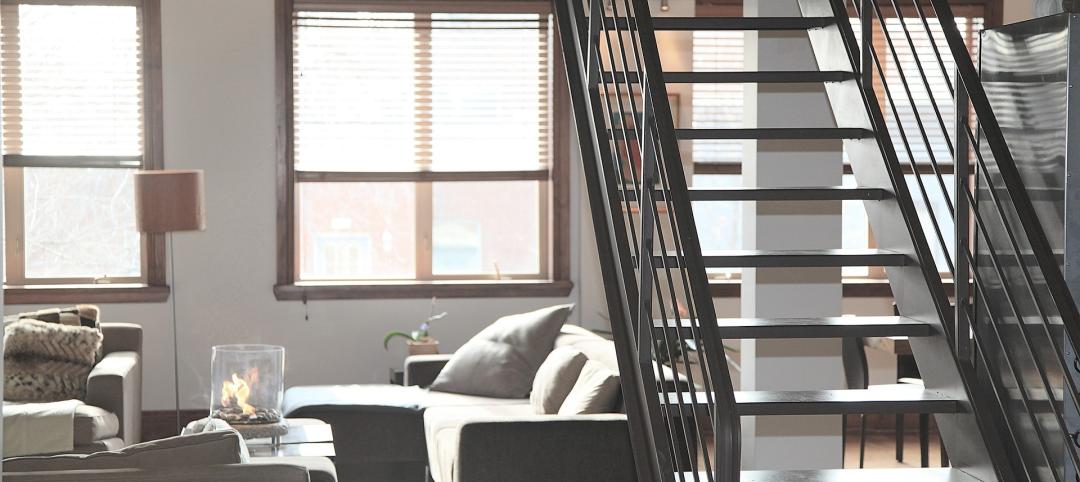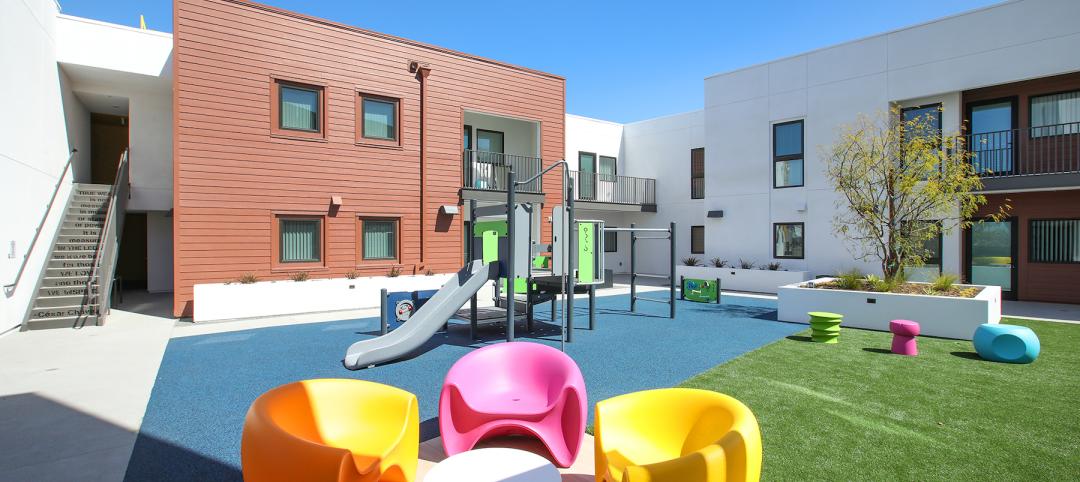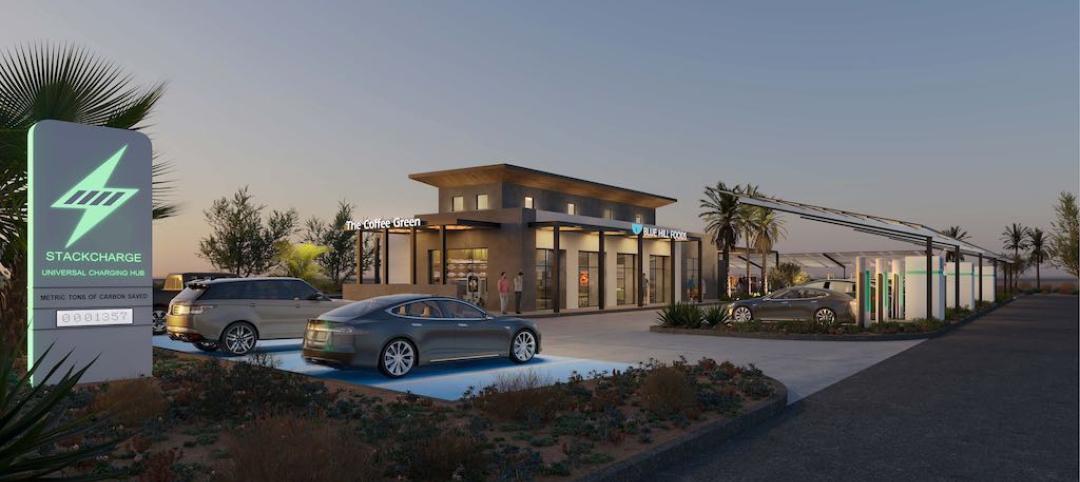The Los Angeles-based design firm Omgivning has released three white papers that propose new ways, post-COVID 19 pandemic, of looking at workplaces, multifamily, and urban reprogramming.
The firm’s ideas revolve around four unifying themes:
• Human-centric design
• Flexibility and adaptability
• Blended uses
• The relationship of space and economic context
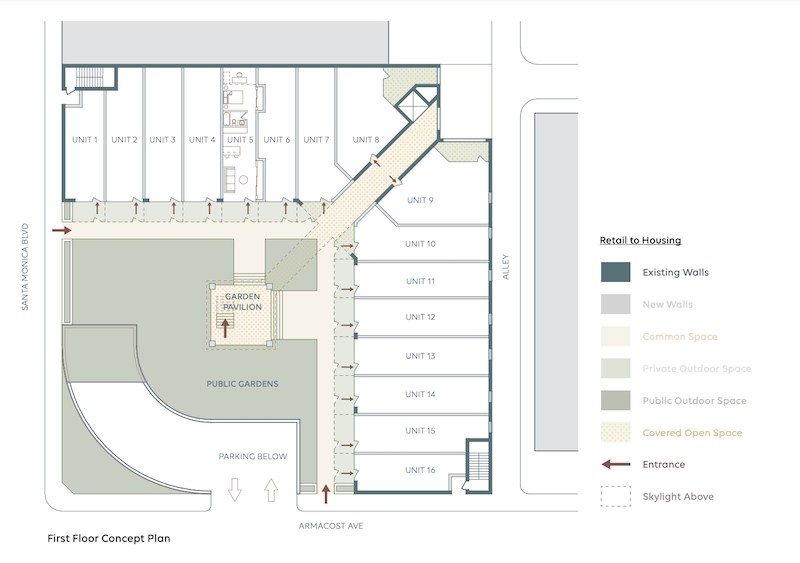
Big-box retail, which is under stress from online shopping, could be rethought for residential conversion with lots of open public areas.
Karin Liljegren, FAIA, IIDA, Omgivning’s founder and Principal, in 1999 worked on the very first projects under Los Angeles’ Adaptive Reuse Ordinance. Her firm’s recent white papers assume that changing social norms have created excess and unused capacity in the built environment. Those assumptions drive the various alternative concepts that Omgivning has devised, with an eye always toward reusing, as opposed to tearing down, existing buildings.
For example, Omgivning’s multifamily paper cites Preservation Positive, a report released by the LA Conservancy in 2020, that approximately three-fifths of Angelenos rent while the city remains in the middle of an ongoing housing crisis. “Rather than build itself out of this crisis, where the average cost to produce one new unit of subsidized affordable housing is at least $400,000, we should seek to find a more cost-effective, creative, and sustainable approach. Through enhancing the city's residential stock in existing buildings, we can help fill the gap toward achieving the City's housing goals.”
BREAKING DOWN THE MULTIFAMILY FORM
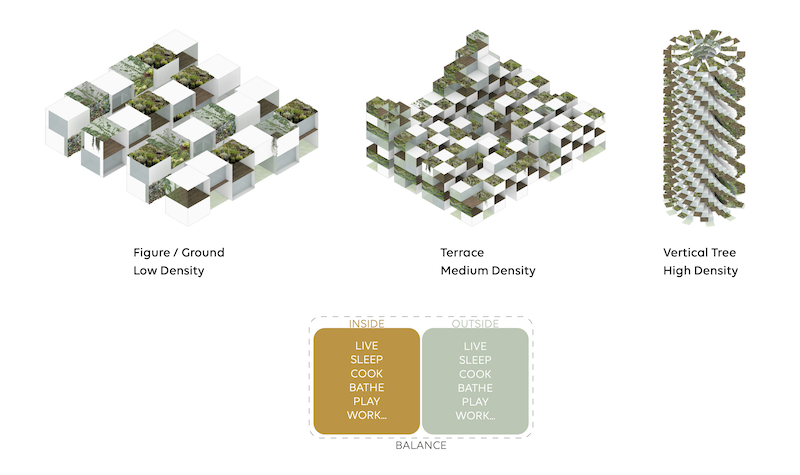
Multifamily buildings can achieve different density levels, depending on the amenities and biophilia included.
The multifamily paper offers four concepts:
• Humanizing the urban experience by providing features for existing urban apartment buildings that contribute to a greener, more porous city;
• Expanding unit types through designs that integrate diversity and flexibility into spaces for the inhabitants' various needs;
• Common spaces that emphasize a connection to nature, expand private work options in communal environments, and introduce on-site commerce; and
• Transforming interiors whose components are designed to be "both/and" solutions to meet multiple needs, as opposed to "either/or" that only allow for a single use.
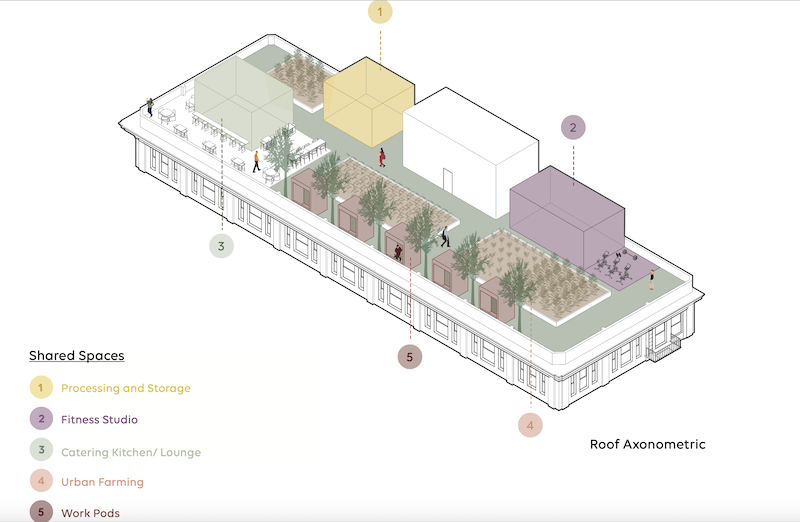
Shared and common spaces that could include roofdeck “work pods” are central to Omgivning's multifamily concepts.
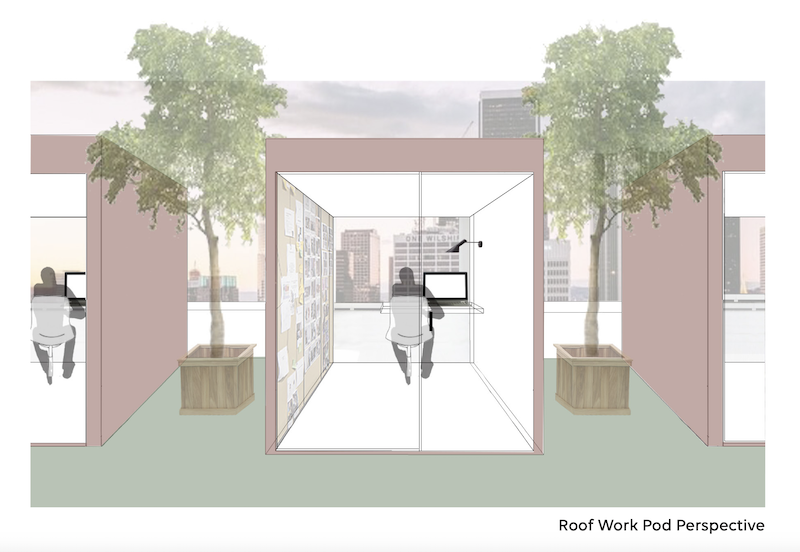
The paper deconstructs the multifamily form to incorporate open-ended light courts that allow natural light and ventilation to flow throughout. Its concepts expand the unit types within buildings to include two-story two-family, as well as private and “gather” zones.
“Opportunities also exist to create new experiences and interactions in areas once relegated to back of house,” the paper states, “or typically common to the street and sidewalk.” That might include relocating the mailroom to the front of the building and adding refrigerated boxes and larger parcel rooms. “Even the simple act of picking up mail presents a greater chance of engaging with neighbors.”
PODS FOR DIFFERENT USES
Omgivining is a big advocate for incorporating “pods” into its reimagining of buildings for privacy and utility. Pods are part of one of the firm’s alternate multifamily unit types. And Omgivning’s workplace paper presents three pod types that accommodate a broad range of needs:
The View Pod, designed for maximum resilience that supports unexpected shelter-in-place requirements. Enclosed on all sides with one main opening directed towards a chosen view, these pods could face exterior windows or a common open space within the office. In its workspace scenario, The View ensures privacy and sound isolation, while remaining visually connected to elements beyond. The sleep scenario can host a mattress for an overnight stay.
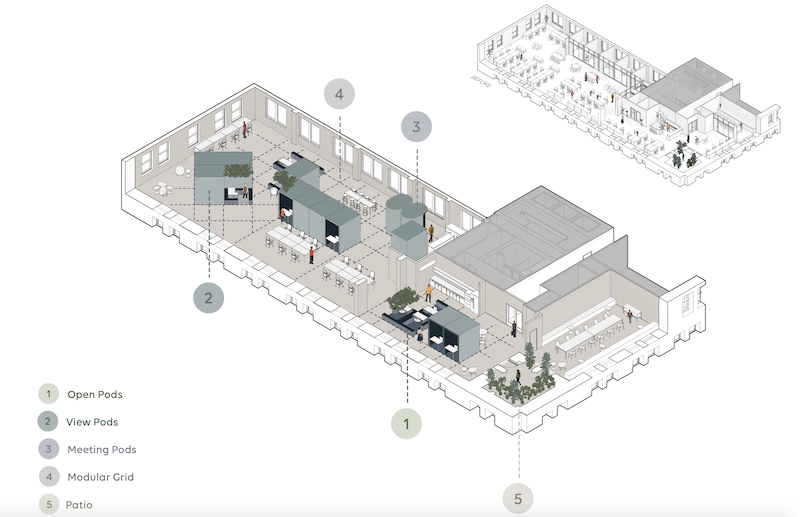
Omgivning reimagines the workplace with different kinds of intimate spaces, such as its “work-meet” pod that allows for privacy and collaboration.
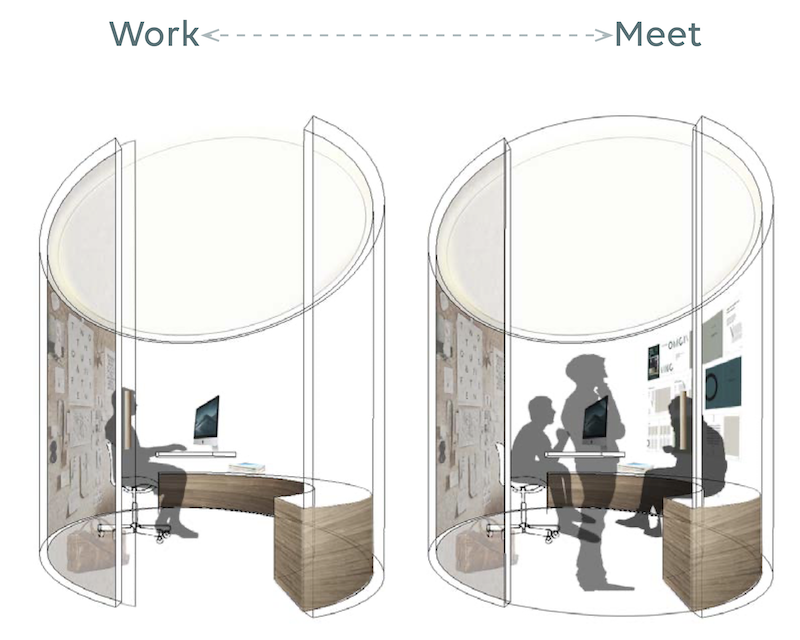
The Meeting Pod, which provides flexibility for open or enclosed meetings. Its circular footprint provides acoustic privacy for video calls and to aid in focus. Built-in millwork offers dual functions for seating and storage. Integrated lighting and tackable surfaces present a clean background for personalization and work-based pin-ups.
The Open Pod, which provides a modular footprint with varying barrier preferences. It defines an individual space while staying visually connected to the communal space. The barrier preferences are adjustable to an open or enclosed layout, based on the occupant's needs. Greenery, suspended from above or in planters, can be used to define zones and remind inhabitants to prioritize wellbeing. The Open Pod provides built-in lockers, open shelving and the option for a height-adjustable desk.
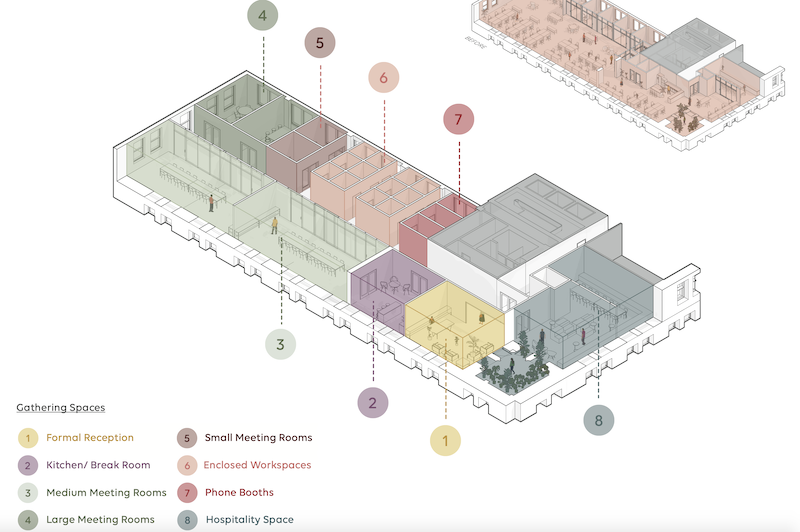
The workplace needs places where employees can still congregate safely.
The workplace paper also offers reuse concepts for gathering spaces and for better infection control, the latter of which helps employers assess workers’ needs by developing targeted protocols that focus on human impacts.
REVIVING TIRED RETAIL AND WAREHOUSE SPACE
In its paper on reimagining urban reprogramming, Omgivning cites experts who anticipate that 90% of real estate development over the next decade will focus on renovation and resuse, rather than new construction.
To that end, this paper proposes ways to transform struggling strip malls (there are 675 malls in Los Angeles alone), big-box retail (using an existing vacant 150,000-sf Costco in L.A. as its starting point), light-industrial warehouses, and urban ground-floor commercial space.
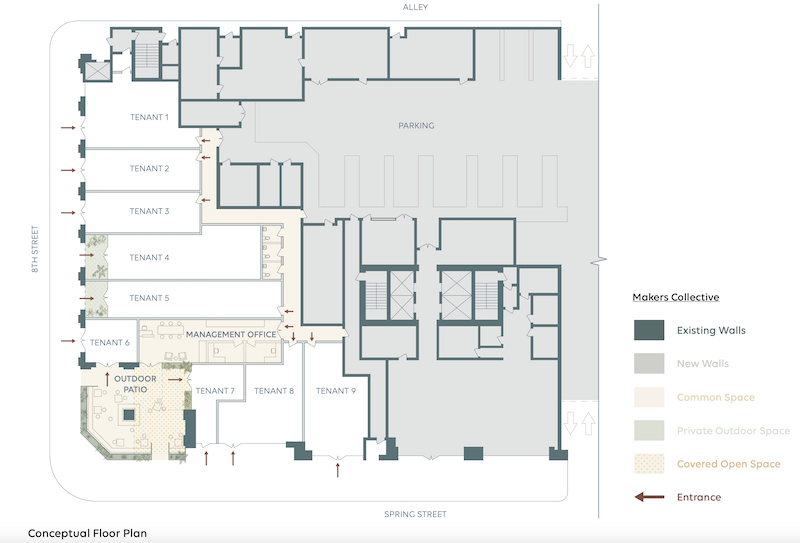
Light industrial space could be converted to leasable maker spaces.
Its vision for converting retail space to housing includes one configuration showing a mini-mall with the capacity to hold 30 600-sf affordable residential units, each outfitted with work-from-home capabilities, and an outdoor patio or courtyard.
Omgivning’s reuse of light industrial space includes an office concept that’s organized around a centrally located courtyard that provides users with cross ventilation, natural light, and connection to green outdoor space. It also conceived a live-work concept that carves up the building into smaller, more affordable lofts that are linked through outdoor courtyards, and are circulation-rich with greenery.
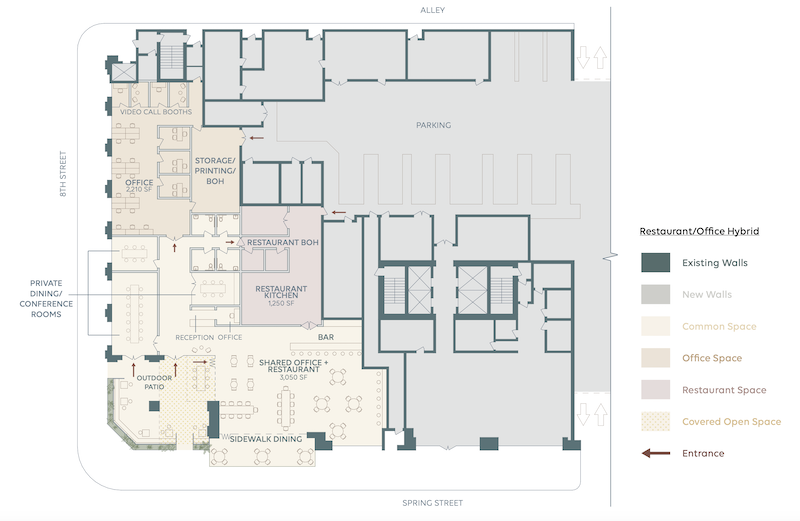
Restaurants and offices share some common traits that could be combined for converting ground-floor retail.
Transforming ground-floor retail could encompass what Omgivning calls a Makers Collective concept, where a master tenant, or even an existing building management company, can lease a large space and subdivide it into smaller units for individuals or small startups. The program consists of shared space to house equipment needed by the tenants, and a shared space for events and periodic showcases of the community’s products. An outdoor lounge and garden provide a communal gathering space.
Omgivning even goes so far as to suggest a restaurant/office hybrid concept that reduces each footprint by sharing the varied seating arrangements within a restaurant to accommodate individual and collaborative work.
Related Stories
Giants 400 | Feb 6, 2023
2022 Reconstruction Sector Giants: Top architecture, engineering, and construction firms in the U.S. building reconstruction and renovation sector
Gensler, Stantec, IPS, Alfa Tech, STO Building Group, and Turner Construction top BD+C's rankings of the nation's largest reconstruction sector architecture, engineering, and construction firms, as reported in the 2022 Giants 400 Report.
Multifamily Housing | Jan 23, 2023
Long Beach, Calif., office tower converted to market rate multifamily housing
A project to convert an underperforming mid-century office tower in Long Beach, Calif., created badly needed market rate housing with a significantly lowered carbon footprint. The adaptive reuse project, composed of 203,177 sf including parking, created 106 apartment units out of a Class B office building that had been vacant for about 10 years.
Adaptive Reuse | Jan 12, 2023
Invest in existing buildings for your university
According to Nick Sillies of GBBN, students are increasingly asking: "How sustainable is your institution?" Reusing existing buildings may help answer that.
Government Buildings | Jan 9, 2023
Blackstone, Starwood among real estate giants urging President Biden to repurpose unused federal office space for housing
The Real Estate Roundtable, a group including major real estate firms such as Brookfield Properties, Blackstone, Empire State Realty Trust, Starwood Capital, as well as multiple major banks and CRE professional organizations, recently sent a letter to President Joe Biden on the implications of remote work within the federal government.
Adaptive Reuse | Dec 21, 2022
University of Pittsburgh reinvents century-old Model-T building as a life sciences research facility
After opening earlier this year, The Assembly recently achieved LEED Gold certification, aligning with the school’s and community’s larger sustainability efforts.
Adaptive Reuse | Dec 9, 2022
What's old is new: Why you should consider adaptive reuse
While new construction allows for incredible levels of customization, there’s no denying that new buildings can have adverse impacts on the climate, budgets, schedules and even the cultural and historic fabrics of communities.
Mixed-Use | Dec 6, 2022
Houston developer plans to convert Kevin Roche-designed ConocoPhillips HQ to mixed-use destination
Houston-based Midway, a real estate investment, development, and management firm, plans to redevelop the former ConocoPhillips corporate headquarters site into a mixed-use destination called Watermark District at Woodcreek.
Multifamily Housing | Nov 29, 2022
Number of office-to-apartment conversion projects has jumped since start of pandemic
As remote work rose and demand for office space declined since the start of the Covid-19 pandemic, developers have found converting some offices to residential use to be an attractive option. Apartment conversions rose 25% in the two years since the start of the pandemic, with 28,000 new units converted from other property types, according to a report from RentCafe.
Multifamily Housing | Aug 17, 2022
California strip mall goes multifamily residential
Tiny Tim Plaza started out as a gas station and a dozen or so stores. Now it’s a thriving mixed-use community, minus the gas station.
Urban Planning | Jul 19, 2022
The EV charger station market is appealing to investors and developers, large and small
The latest entry, The StackCharge, is designed to make recharging time seem shorter.


